| Cubic Yards |
|
| Cubic Meters |
|
| Cubic Feet |
|
Concrete: Laying the Groundwork for the Modern World
- Guide Authored by Corin B. Arenas, published on June 14, 2021
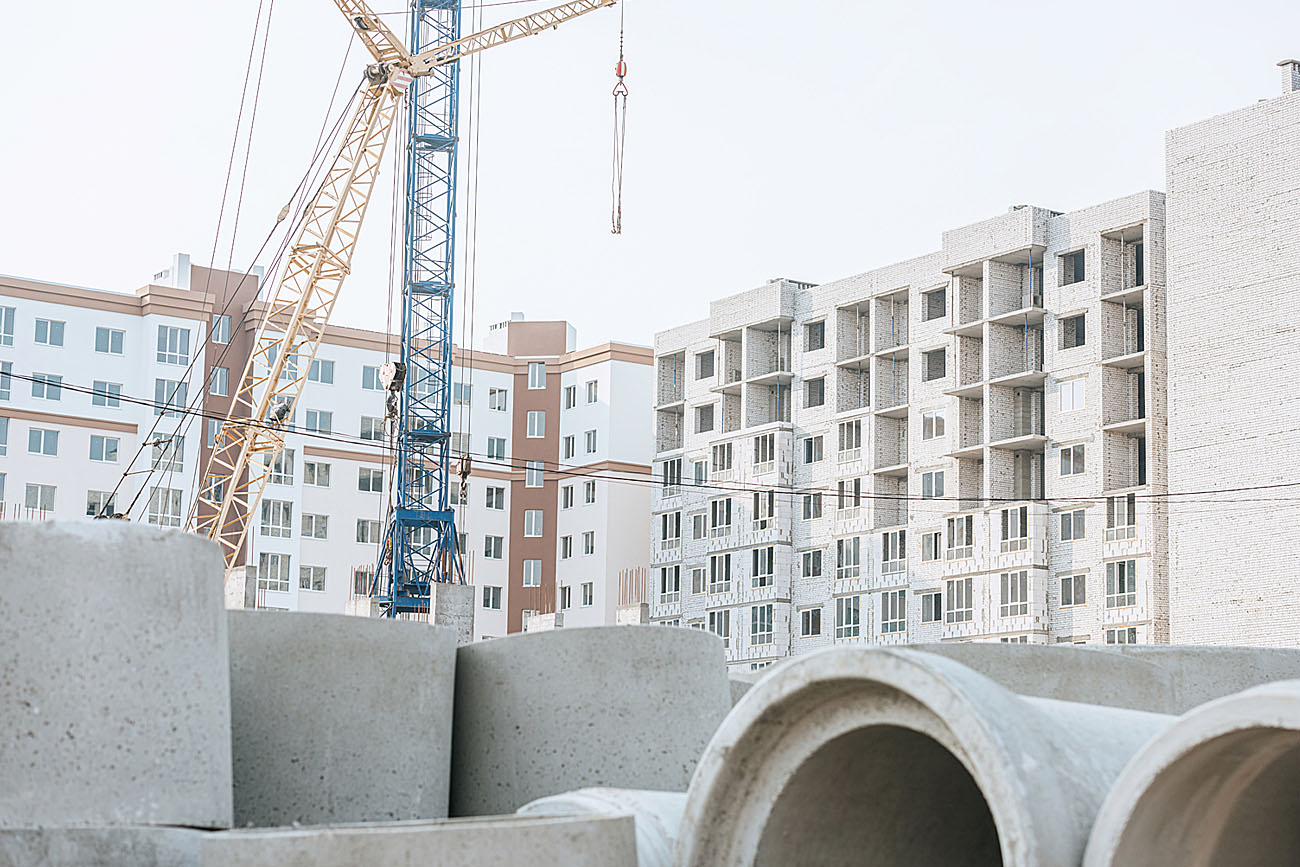
Ubiquitous concrete lies at the foundation of modern society, in the most literal way. In every town and city today, you’re bound to see at least one thing made of the substance. Many buildings themselves are built in part of concrete. Concrete bridges, sidewalks, and roads link up the world. There’s little wonder why we call the modern city “the concrete jungle.”
Concrete is a miracle of chemistry. With it, builders create imposing and beautiful marvels of engineering. Though first perfected by the Romans, it’s become synonymous with modernity. Across the globe, concrete remains a key component in infrastructure and domestic construction.
What is Concrete?
To the untrained eye, a piece of broken concrete resembles stone. This is no coincidence. The raw material for concrete comes from sedimentary rocks. Closer inspection will reveal its true nature as a composite material. To create concrete, builders must mix five essential ingredients:
- Binding mixture (cement): This is a reactive substance that solidifies when mixed with water. The resulting slurry hardens and traps the remaining ingredients together, creating concrete. Today, the binding mixture of choice is Portland cement. Other available materials for binding include lime and volcanic ash.
- Coarse aggregate: These are large lumps that add volume and weight to the concrete mixture. The most common aggregates include crushed stones and gravel.
- Fine aggregate: These are fine-grained substances like sand that add bulk to the finished concrete. Taken together, coarse and fine aggregates make up the bulk of the concrete’s mass at up to 70 percent.
- Air: Concrete must have air pockets in them to ease expansion and contraction.
- Water: This is the catalyst that creates the reaction.
Concrete forms from a complex reaction that starts when water mixes with cement. The two create a gelatinous mass that suspends any material mixed into them. After 3 or 4 hours, the gel releases microscopic tendrils from each grain of cement. These tendrils enmesh any particles of aggregate suspended between them. Over the course of several days, the tendrils harden, locking the mixture in place.
Once the process completes, the concrete sets. The resulting material is dense and hard. Once the tendrils have solidified, they are near-impossible to break through downward pressure.
All Wet
It is not evaporation that makes concrete hard. As Portland cement reacts to the presence of water, it creates a layer of tricalcium silicate. This layer forms fast and prevents the concrete from getting too moist. To ensure the strongest concrete, builders must use the right amount of water. Sometimes, builders must avoid putting too much water onto the concrete. Other times, engineers must keep setting concrete wet through a process called curing.

With the right formulation, some concrete mixes can be set underwater. Thus, engineers can build the concrete foundations of bridges, dams, and ports.
Some cement additives help improve the durability of concrete in extreme conditions. Cements with air-entraining agents allow air bubbles to form within the concrete. The pockets of air give water vapor a place to expand in freezing conditions. This helps make the concrete more resistant to cracks in extreme low temperatures. Engineers must be careful to keep these air pockets small. Large air pockets within the concrete can lead to shrinkage and cracking.
Specialty cements may include pozzolana ash to increase its durability further. This is a common additive for cements used in oil wells. Other additives may be used to slow down the reaction. These would keep the mixture from setting too fast.
Concrete behaves like a porous liquid when first mixed. While wet, builders can mold it into various shapes. Workers have a limited time to mold and shape the concrete before it sets. This malleability makes it a versatile substance. Builders can create all kinds of intricate shapes using molded concrete. Spectacular examples include the Canadian National Tower and the Sydney Opera House.
Cement
Most laypeople use concrete and cement interchangeably in regular conversation. In reality, the two are very different substances. Cement is the binding paste that holds concrete together. It has been around for millennia, far longer than there has been concrete.
Early modern forms of concrete use natural cement mixes. They need only to be heated to be usable. Their quality varies as the concentrations of the materials are not uniform. Artificial cement mixtures have a more consistent ratio of components. Thus, their quality is predictable. It was the use of cement mixtures in stucco that led to the creation of modern concrete.
The most popular cement used in concrete today is Portland cement. It is also used in masonry constructions and as a binder for stucco wall finishes. This cement is a mixture of four different compounds:
- Tricalcium silicate (3CaO · SiO2)
- Dicalcium silicate (2CaO · SiO2)
- Tricalcium aluminate (3CaO · Al2O3),
- Tetra-calcium aluminoferrite (4CaO · Al2O3Fe2O3)
These substances react with water to form concrete paste. This is the stony, mesh-like matrix that gives concrete its hardness and durability.
Making Cement
The primary ingredient in the creation of Portland cement are sedimentary rocks. These include limestone and chalk. Other materials mixed in include clay, and rocks like shale and slate. The ingredients are crushed and mixed together. The ingredients are then heated and churned in a kiln, when gypsum is added.

In a process called sintering, the mixture fuses together. The resulting material, clinker, must then be ground up. Basic cement grades consist only of ground clinker and little else. Other additives are mixed into the resulting power, creating other grades of cement. The production of clinker produces a lot of pollution in the form of carbon dioxide (CO2).
The other substance of choice for cement is hydraulic lime. Lime was a key ingredient in Roman cement and remained popular in Europe for centuries. Unlike Portland cement, lime cement creates a concrete that is porous. This makes it less than ideal for modern buildings, which often must be watertight.
Heritage conservationists, meanwhile, prefer lime mortar and concrete when restoring older structures. Many older buildings are made of softer materials. Lime mortar’s brittleness can be used to prevent damage in these older buildings. When buildings sway, the easier-to-fix mortar is the first to break. Lime also wicks away water from interior spaces, preventing water damage.
The First Concrete
People in the Middle East, China, and the Balkans developed their own early form of concrete. Across the globe, civilizations that worked with masonry developed mixes for mortar. These simple cement mixes helped hold mud bricks or ashlar stone together. Some cultures also used early cement mixes as stucco for their outer walls. This rock-hard layer not only made their walls look better. It also protected them from outside erosion.
The first true concrete was made from lime extracted from limestone. These were made by the Nabatean people of the Ancient Middle East. They lived in an arid, drought-prone region. To provide their cities with water, they built a system of watertight wells out of concrete.
Roman Concrete
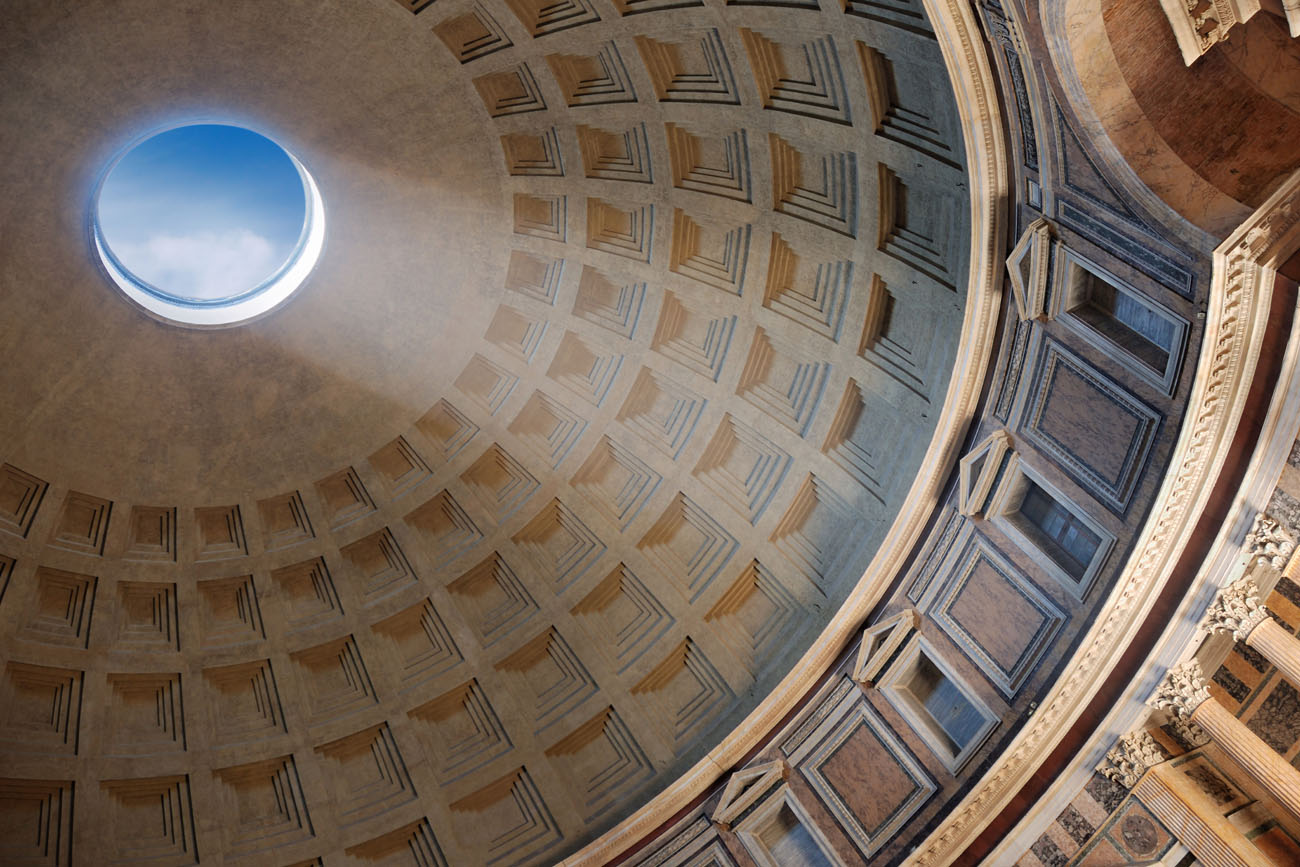
It was the Romans, however, that elevated concrete into an art form. The skilled engineers of the Roman Empire developed concrete formulas for various applications. They even created special maritime concrete to use in ports and coastal constructions.
The Romans built many grand infrastructure projects across their empire. To make these possible, they used concrete mixes alongside brick and stone. Roads, aqueducts, and public buildings all used concrete. And these were built to last. Many surviving Roman concrete structures still remain in good condition today. Among the most spectacular examples is Rome’s Pantheon, a well-preserved cylindrical temple. The building’s dome was an impressive technical achievement for Roman architects and engineers. But Roman engineers did not have iron reinforcements. This hindered their ability to build larger structures.
The concrete used by the Romans used ash and rock of igneous (volcanic origin). One recipe used volcanic ash from the town of Puteoli (modern Pozzuoli). Known to the Romans as pulvis puteolanus (dust of Puteoli), Pozzolana ash yielded concrete ideal for underwater use. On land, Roman engineers used a type of volcanic sand called harena fossicia.
And this recipe works. Scientists from the University of California at Berkeley analyzed Roman concrete samples. They found that the Roman formula produced a strong calcium-aluminum-silicate-hydrate bond. The resulting compound is strong and stable at the molecular level. Roman concrete resists the same corrosion better than modern Portland cement concrete.
Sadly, most knowledge of Roman concrete was lost in the middle ages. It wouldn’t be until 1414 that pozzolana concrete would be rediscovered.
The Arrival of Portland Cement
Modern concrete traces its origins to England with the invention of Portland cement. A type of lime cement, precursor to Portland cement, was invented in 1756 by engineer John Smeaton. Although different from today’s Portland cement, the resulting mix was quite strong. Smeaton used his formula in the construction of a lighthouse. It fell only because the rock it stood on eroded away. His work on the composition of lime paved the way for more refined concrete recipes.
Another English engineer, Joseph Aspdin, patented the first true Portland cement in 1824. His product gained its name from its resemblance to high-quality Portland stone. Over time, he would refine his formula by making careful proportions of ingredients. This helped create a consistent product absent from natural cements.
Aspdin relied on vitrification to fuse the materials together in the finished cement. The process blended the ingredients together to a glasslike consistency. The resulting material was ground up for use. Vitrification demanded high temperatures. Ingredients must burn in a kiln to achieve this reaction.
Improvements in this stage helped enhance the quality and quantity of cement production. The first major innovation was the rotary kiln. This was invented by English engineer Frederick Ransome in 1873. This kiln didn’t only help manufacturers mix their ingredients well. It also helped them manage internal temperatures. Another major milestone was the long kiln, patented in 1909 by Thomas Edison. His kiln had a length of 150 feet (45.72 meters), allowing him to scale up production by a large margin. Today’s kilns are even longer, at 500 feet (152.4 meters).
Concrete Buildings
Unlike the Romans, the 19th Century Europeans thought lowly of concrete. Builders often used concrete for industrial structures like factories and warehouses. They didn’t see concrete as a building material for houses and public buildings at first. Thus, its adoption in residential architecture was slow.
In 1850, Francois Coignet pioneered the use of concrete in residential buildings. The French industrialist also used exterior steel rods to help support concrete walls. These were precursors to reinforced concrete. In 1854, William B. Wilkinson ordered the construction of a concrete servant’s cottage. This simple house is the first residence made of true reinforced concrete.
As a product for luxury houses, concrete remained unpopular until 1875. By then, American engineer William Ward commissioned a concrete mansion dubbed Ward Castle. The home was meant to be a fireproof haven for him and his wife. The building still stands today in Port Chester, New York.
Ward had the walls look like more “acceptable” masonry. These decorative facades helped turn public opinion in favor of concrete architecture. In 1902, French architect Auguste Perret applied a similar approach. He designed a reinforced concrete apartment building in Paris whose facade impressed onlookers. From there, concrete buildings could only go up. This was soon followed in 1903 by the high-rise Ingalls Building in Cincinnati, Ohio. Both structures still stand today. Concrete and steel architecture continued to soar throughout the 20th and 21st centuries. The tallest building on Earth, the Burj Khalifa, relies on both concrete and steel for support.
Time for Reinforcement
Concrete can resist immense downward pressure. Despite this strength, it is also very brittle. When stretched, the tendrils within the concrete fall apart. Standard Portland cement concrete has a compressive strength of 3,000 to 6,000 pounds per square inch (psi), or about 20,684.27 to 41,368.54 kilopascals (kPa). In contrast, its tensile strength is only 300 to 700 psi (2,757.9 to 4,826.33 kPa).
This can be a problem for tall buildings. They need not only to support their own weight but also withstand wind movements. For most modern building applications, plain concrete is not up to the task.
To surmount this problem, engineers today use reinforced concrete. They add concrete to a pre-built framework of steel reinforcement bars (rebar). The resulting composite material can better withstand the tension. The rebar within the concrete takes in some of the force applied to the concrete matrix. This way, the concrete doesn’t receive as much stress .
For heavy-duty purposes, engineers rely on prestressed concrete. Here, they stretch steel rebar cables through hydraulic jacks before pouring in concrete. The stretched cables can be anchored in place by plugs or cut off. As the cables try to snap back, they pull back the surrounding concrete. This results in a much sturdier concrete beam.
The Advantages of Concrete
Concrete is remarkably durable. Although not without limits, it surpasses wood and metal in sheer staying power. This is especially evident in extreme conditions like underwater applications. Specific types of concrete can resist water damage for up to 50 years. The appropriate mix of concrete can also survive extreme temperatures.
Not only is concrete strong, it is also very cheap. The ingredients for modern concrete are quite easy to find. Most places on Earth have access to cement plants and quarries.
Concrete is moldable into a vast assortment of shapes. These shapes act as a unit and will hold its shape. It’s as hard as stone and easier to work with. Indeed, concrete’s similarity to stone can be used to great effect. Engineers and designers can have concrete stamped to give it a desired texture.
As pavement, concrete has several advantages over asphalt. Because they are a lighter gray color, they reflect more solar radiation during the day. This reduces the ambient temperatures as they absorb less heat. Used in cities, reflective concrete paving can help reduce the urban heat island effect.
Finally, concrete is a great way to recycle various infill materials. Engineers can mix into concrete an assortment of industrial waste products. This reduces waste and improves the integrity of the concrete.
Ingredients and Proportions
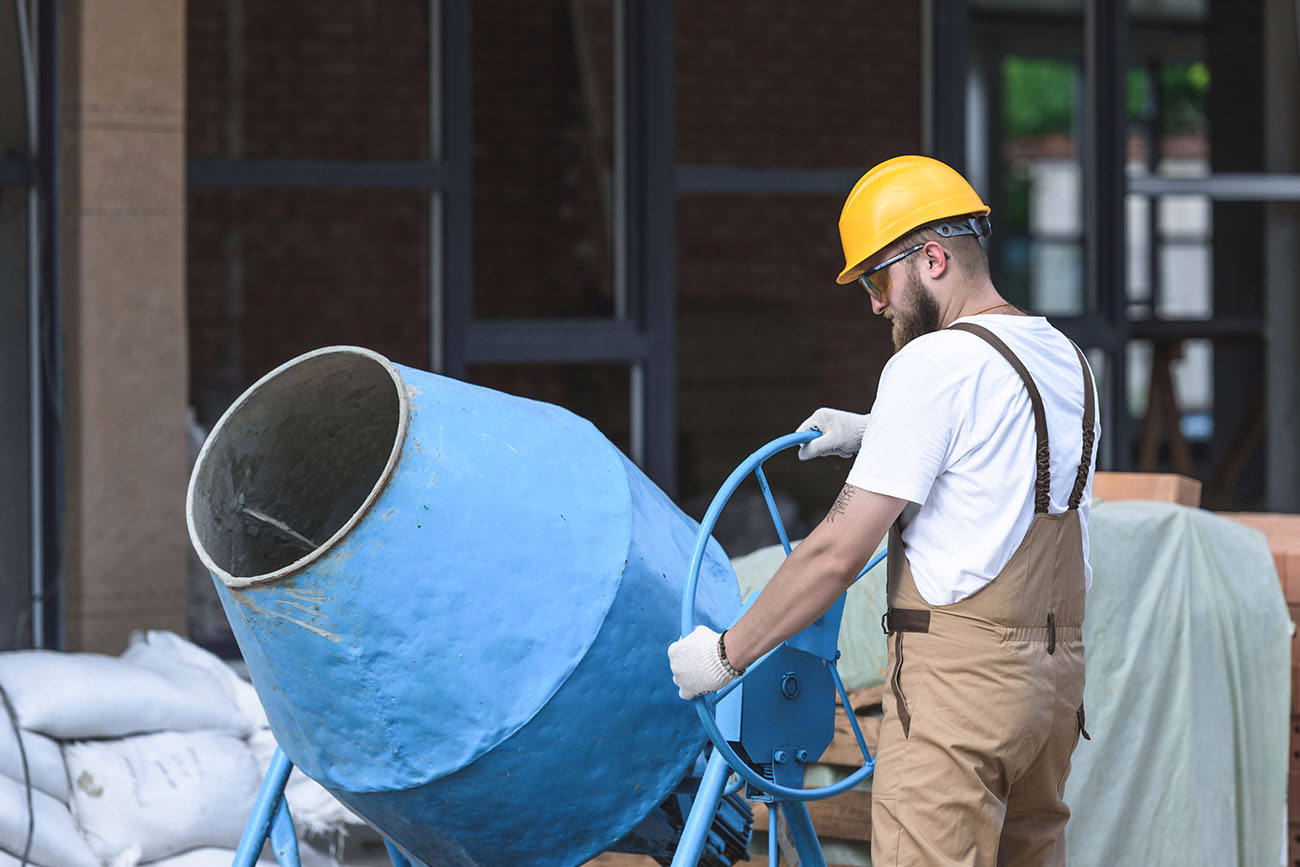
Not all concrete is created equal. Changing the proportions of ingredients will yield a concrete with different properties. To maintain consistency, engineers and builders use standardized cement grades. These will yield a concrete ideal for a specific purpose. A few of the factors will affect the type of concrete engineers and builders will need:
- Size: Bigger structures need stronger concrete mixes.
- Ease of application: While concrete is stronger when it’s dry, it’s also easier to apply when it’s wet.
- Delivery: Concrete mixed on-site will be used immediately, so there’s no need to slow down the drying process. Ready-mix concrete, however, needs to travel. The mix must react slowly with water vapor to remain usable.
- Environmental conditions: Builders formulate specific mixes of concrete to resist common conditions. Specific mixes, for instance, are formulated to set and survive underwater.
The first and most important component to consider is the type of Portland cement. Trace elements are a key consideration when selecting cement. Some aggregates, for instance, contain specific silicas. These may interfere with the creation of concrete. To neutralize these chemicals, the cement used must have a low alkalinity.
Builders and engineers in the U.S. recognize five types of cement. These are designated by the American Society for Testing and Materials (ASTM). Engineers have optimized each type to perform best in the prevailing climate environment.
| Type | Name | Ideal Conditions |
|---|
| I | Ordinary | Used for most standard residential work |
| II | Modified | Used in moderate sulfate conditions |
| III | High-Early Strength/Rapid Hardening | Used for areas where frost is a major concern |
| IV | Low-Heat | Used in specific circumstances like industrial application |
| V | Sulfate-Resistant | Used in high sulfate conditions |
Most of the contiguous U.S. enjoys a mild climate. Thus, American builders often use only Type I and II cement in concrete production. In other countries, Type II cement is omitted.
Sulfate Attacks
Sulfates are compounds that contain the element sulfur. High concentrations of sulfates can cause rapid erosion of concrete in two ways. First, sulfates react with the concrete paste that links the mixture together. When this happens, the tendrils break down. This reaction also leaves behind compounds like ettringite. As these compounds accrue and expand, they cause the paste to crack, leading to further damage. The damage this leaves behind gets worse in extremes of weather.

The effects of sulfate attacks depend on the type and concentration of sulfates in the area. By nature, concrete has some sulfates mixed into it from aggregates like gypsum. Some environments have higher concentrations of sulfates by nature. Other places with a lot of pollution may also suffer from a greater volume of sulfates. Acid rain, with high levels of sulfuric acid, can cause slow but devastating damage to concrete structures.
Builders also measure the strength of the resulting concrete in grades. The higher the grade, the stronger the concrete is. The mix ratio of the concrete determines its grade. A concrete grade of M25, for instance, needs a mix ratio of 1 : 1 : 2. This indicates a ratio of one one part cement, one part water, and two parts coarse aggregates. This mixture has a compressive strength of 3,625 psi (25,000 kPa).
Most concrete available on the market comes in fixed ratios called “nominal mixes.” These are industry-standard proportions that yield a predictable result. Higher-grade concrete mixtures will have design mixes. These are custom ratios formulated for the specific needs of the construction project. The design mix will be different each time. Builders must follow their desired ratios with care. Incorrect formulations can create voids in the concrete, which will lead to cracking.
Engineers sort the grades into three categories: normal, standard, and high-strength. Most homes will use normal-grade concrete using nominal for most applications. Heavy construction projects, meanwhile, often use higher grade concrete mixtures.
| Grade | Category | Mix Ratio | Compressive Strength (psi) |
|---|
| M5 | Normal | 1 : 5 : 10 | 725 psi |
| M7.5 | Normal | 1 : 4 : 8 | 1,087 psi |
| M10 | Normal | 1 : 3 : 6 | 1,450 psi |
| M15 | Normal | 1 : 2 : 4 | 2,175 psi |
| M20 | Normal | 1 : 1.5 : 3 | 2,900 psi |
| M25 | Standard | 1 : 1 : 2 | 3,625 psi |
| M30 | Standard | Design Mix | 4,350 psi |
| M35 | Standard | Design Mix | 5,075 psi |
| M40 | Standard | Design Mix | 5,800 psi |
| M45 | Standard | Design Mix | 6,525 psi |
| M50 | High-strength | Design Mix | 7,250 psi |
| M55 | High-strength | Design Mix | 7,975 psi |
| M60 | High-strength | Design Mix | 8,700 psi |
| M65 | High-strength | Design Mix | 9,425 psi |
| M70 | High-strength | Design Mix | 10,150 psi |

Tip!
To find out the compressive strength value in kilopascals, multiply the grade’s number by 1,000.
Water and Workability
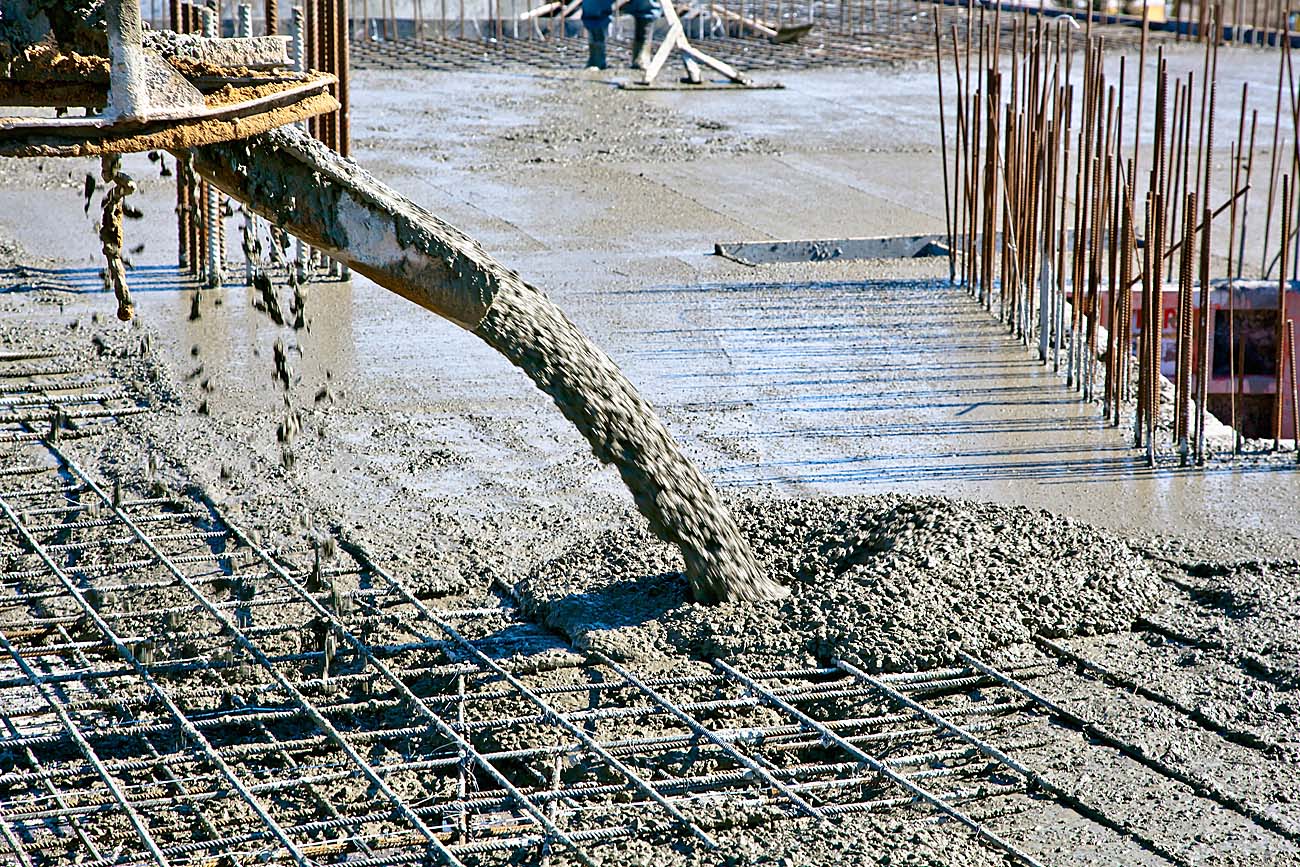
Water is another important element to consider in formulating concrete. You must use the appropriate amount of water to catalyze the reaction. It also helps make the concrete more workable. A concrete with a high amount of water content can be poured and molded with relative ease.
Use too much water, however, and you compromise the strength of the resulting concrete. Moreover, excess water left unused in the reaction will evaporate. As it does, it creates voids within the concrete that causes it to lose some of its strength and integrity.
As a rule, the less water you use, the stronger the final composition will be. The water-to-cement ratio is a good way of determining the right amount of water for your needs. The ideal ratio ranges between 0.4 and 0.6. Higher ratio numbers yield weaker concrete. The water ratio of concrete determines its workability.
| Water-to-Cement Ratio | Designation | Description |
|---|
| Below 0.4 | Unworkable Concrete | This concrete has little water and has a pasty consistency. The cement does not always stick to the aggregate. The aggregate materials often stay separated. This mix is difficult to use. |
| 0.4 – 0.55 | Medium Workable Concrete | This is the standard mixture ideal for most uses of concrete. The cement has enough water to keep everything well-mixed. The resulting concrete is easy to compact while wet. Builders can mix, transport, and place this mixture with ease. |
| 0.55 – 0.6 | Highly Workable Concrete | This mixture is ideal for large batches of concrete. Because the mixture is less viscous, the aggregates in these mixes sink down. Builders often use this mixture for situations with higher levels of reinforcement. |
One way of measuring water content in mixed concrete is through the slump test. Builders take a conical sample of concrete and lay it wide-side down in a place free of vibrations. They then measure the resulting subsidence (slump) of the cone to determine adequate water levels. Cones that do not subside much (if at all) are ideal for most purposes.
Cones that fall apart have too much water or are inadequately mixed. Do note that highly workable concrete mixes cannot pass the slump test. They have a greater volume of water in the mixture by design.
Ready-Mix Concrete
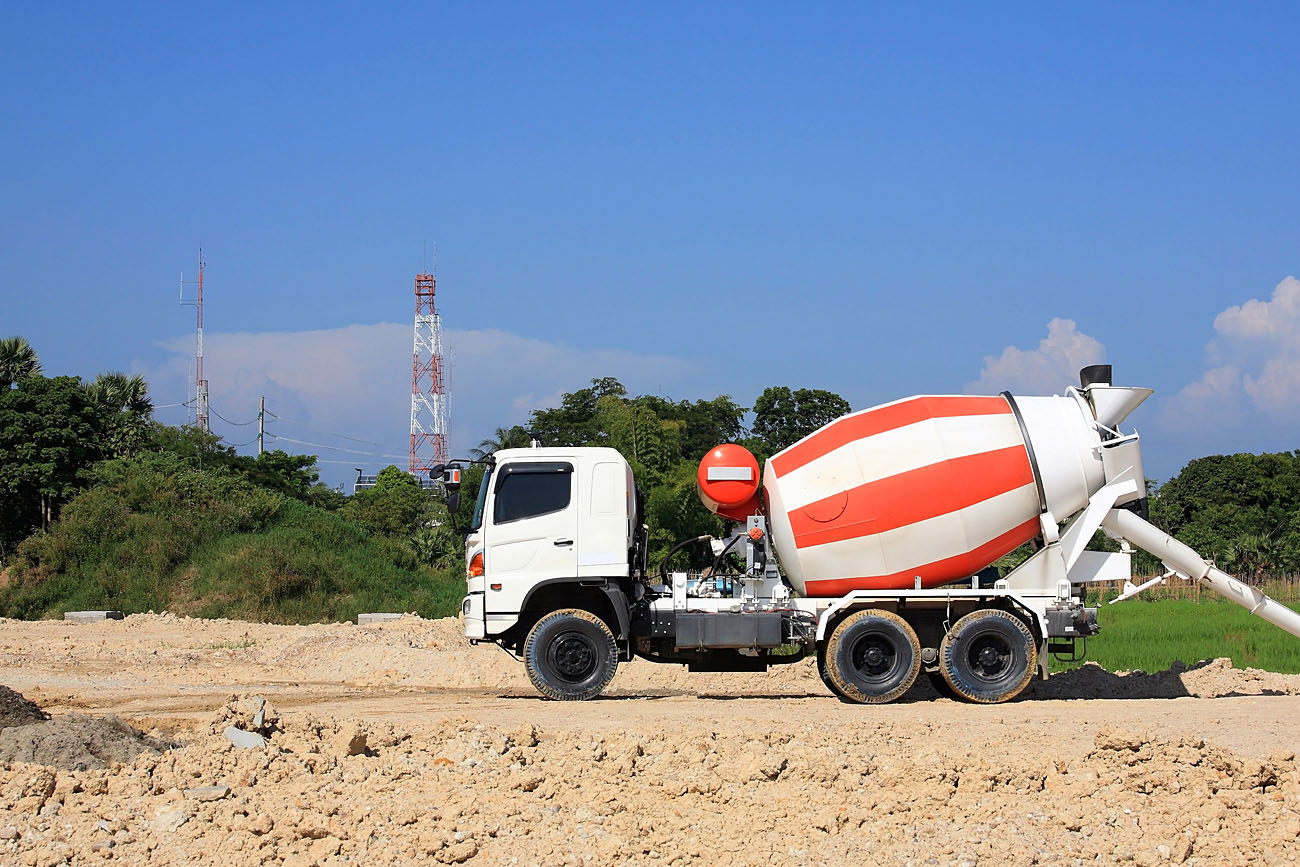
To save time, many builders order ready-mix concrete prepared to their specifications. Engineers create formulas before the project begins. These formulas go to the central plant, which mixes the concrete to the specified ratios. Engineers receive ready-mix concrete via the familiar cement mixer trucks. Once the concrete arrives, they need only to pour it where it needs to go.
This is a popular option for large-scale construction projects. Besides being convenient, ready-mix concrete has several advantages for builders. Builders needn’t buy or mix the individual components of concrete. Because of this, construction projects consume less cement and other materials. This saves builders a lot of time and money. Ready-mix concrete also removes irregularities in the concrete caused by human error. A pre-made batch of concrete guarantees consistency. Moreover, ready-mix concrete is better for the environment. By using and wasting less cement, they reduce their total greenhouse gas emissions.
There are key logistical challenges to using ready-mix. The concrete paste begins to react with water while still in the mixer. Thus, it must arrive on time to remain usable. While additives can slow down the reaction, these are often not enough. Thus, strict planning is essential for the effective use of ready-mix concrete. Engineers must source ready-mix concrete from plants close to the construction site. To be workable, the infrastructure near the site must also be strong enough to carry mixer trucks.
Facing the Modern Challenges of Concrete
Concrete is at the forefront of building booms taking place across the globe. The ingredients for concrete remain in high demand. By 2021, Cement Market Research projects the global consumption of cement to reach 4.42 billion tons. A real estate juggernaut, China alone accounts for much of this consumption. Vaclav Smil, author of Making the Modern World, notes that the Chinese demand for concrete far outpaces even that of the United States. In three years, Chinese engineers used more concrete than the U.S. did through the entire 20th Century.
| Country | Consumption | Years |
|---|
| United States | 4.5 billion tons | 1901 – 2000 |
| China | 6.6 billion tons | 2011 – 2013 |
But with this demand comes dire consequences for the environment. As demand escalates, so will its effect on nature. Mining for the components of cement is a destructive industry that despoils landscapes. Moreover, cement production produces a sizable part of the world’s greenhouse gas emissions. In 2015, this accounted for 2.8 billion tons of excess carbon dioxide. That was more air pollution than both China and the United States combined! Much of these emissions come from the firing process used to make clinker. There are very few ways to reduce these emissions by standard means.
Moreover, today’s concrete does not have the staying power of its ancient forebearers. Across the U.S. alone, many structures made of reinforced concrete are decaying. Much of this decay can be attributed not to the concrete itself but to rebar. Most kinds of rebar corrode over time. As rebar corrodes, the concrete weakens. The damage that results is expensive to repair and replace.
Engineers once thought that reinforced concrete structures could last for millennia. Due to internal corrosion, they now expect them to last between 50 to 100 years. Indeed, damage can set in as early as 10 years in suboptimal conditions.
Ancient Technology for a Green Future
On its own, concrete already has plenty of avenues for greening. As mentioned above, people can use industrial waste as effective alternative aggregates. It’s one thing to recycle waste to prevent pollution. It’s another to remove the waste already there. By curing concrete with carbon dioxide, builders can remove greenhouse gases from the atmosphere.
There’s only so many ways to stop rebar rusting from within concrete. Switching to rust-resistant rebar could give infrastructure of the future its second wind. To ensure integrity, builders must also seal their rebar tight through impermeable concrete. They must ensure that these protective layers in turn stay stable.
But these small steps aren’t enough on their own. Surmounting the challenges of concrete decay will be the biggest move toward sustainability. And it starts by looking back. Concrete piers made by Roman engineers remain in good condition after more than 2,000 years. Meanwhile, modern underwater concrete only has a serviceable life of 50 years. Re-examining how the Romans made their cements can lead to durable concrete mixes. Some of these mixes will not need rebar in some applications. Others may provide a denser, impermeable layer to protect rebar from corrosion.
Some of the ingredients the Romans used may also make the concrete of the future greener. Ingredients like Pozzolana ash played a role in making their concrete extra strong. Using these will reduce industry dependence on polluting Portland cements.
Demand for concrete can only increase as we build and rebuild. To meet sustainable development goals, we must re-examine our approach to concrete. The foundations we build upon should be built to last.
Change privacy settings




